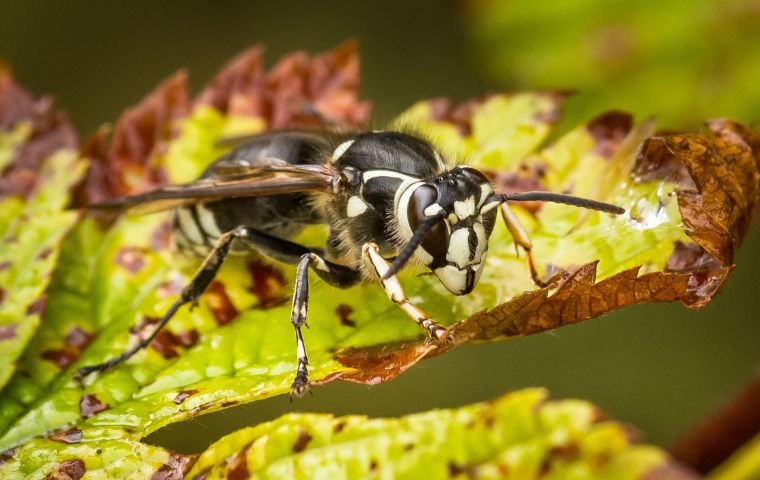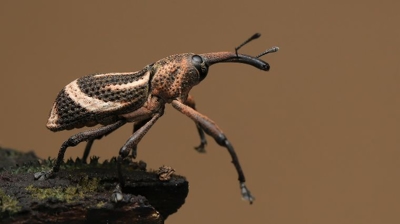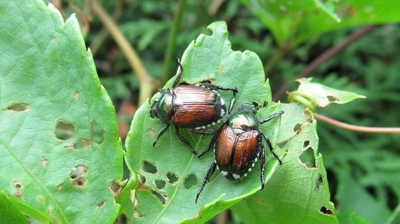
Bald Faced Hornets
What Are Bald Faced Hornets?
Bald-faced hornets (Dolichovespula maculata), also known as white-faced hornets, are a type of social wasp species native to North America. They are distinct from true hornets and are more closely related to yellow jackets. Here is an overview of bald-faced hornets:
Are Bald Faced Hornets Harmful?
Bald-faced hornets (Dolichovespula maculata) can be considered dangerous under certain circumstances, primarily due to their defensive behavior and painful stings. Here is an explanation of their potential danger:
- Defensive Behavior: Bald-faced hornets are known for their aggressive and territorial nature when it comes to defending their nests. If they perceive a threat to their colony or nest, they are quick to respond with aggression. Their nests are well-protected, and they will vigorously defend them against any perceived intruders, including humans.
- Painful Stings: Bald-faced hornets possess a potent venom and can deliver painful stings. The stings can be especially uncomfortable, and for some individuals, they can cause severe allergic reactions. Multiple stings from a swarm of these hornets can be a medical emergency.
- Allergic Reactions: Like other stinging insects, some people may be allergic to the venom of bald-faced hornets. An allergic reaction can cause symptoms such as severe swelling, difficulty breathing, and anaphylaxis, which is a life-threatening condition. Anyone with a known allergy to insect stings should seek immediate medical attention if stung.
- Nuisance: While not inherently dangerous, bald-faced hornets can be a nuisance when their nests are located near human activity areas. Their presence can lead to discomfort and anxiety, especially if the nests are in close proximity to homes, gardens, or recreational areas.
- Nest Locations: Bald-faced hornets often build their nests in trees, shrubs, or on the sides of buildings, and if these locations are near human dwellings, they can pose a danger if disturbed.
Bald-faced hornets are generally considered dangerous when their nests are disturbed or when they perceive a threat to their colony. Their stings can be painful, and for individuals with allergies, they can be life-threatening. It's essential to exercise caution and avoid provoking them. If you encounter a nest in a location that poses a risk to you or others, it's advisable to contact professional pest control services for safe nest removal rather than attempting it yourself.
Bald Faced Hornet Appearance
Bald-faced hornets (Dolichovespula maculata) have distinct physical characteristics that make them easily recognizable. Here's what they look like:
- Size: Bald-faced hornets are relatively large wasps, typically measuring between 0.5 to 0.75 inches (1.3 to 2 cm) in length. Their size can vary slightly depending on their role within the colony, with queens being slightly larger than workers.
- Coloration: The most striking feature of bald-faced hornets is their black body with white or ivory-colored markings. These white markings are found on their face and most prominently on the front of their head, which is why they are commonly referred to as "white-faced hornets." They also have white bands or patches on their abdomen.
- Body Shape: Bald-faced hornets have a robust and elongated body shape. They have two pairs of membranous wings, six jointed legs, and a characteristic narrow waist, or petiole, which is a common feature of wasps in the Vespidae family.
- Wings: Their wings are transparent and folded longitudinally when at rest. Like all wasps, they have two pairs of wings, with the forewings being larger than the hindwings.
- Antennae: Bald-faced hornets have long, slender antennae that emerge from the front of their head. These antennae are used for sensory perception, including detecting chemical signals and locating food sources.
- Stinger: Like other wasps, bald-faced hornets possess a stinger that they use for self-defense. Their stings can be painful and may cause allergic reactions in some individuals.
- Leg Structure: Their legs are adapted for grasping and manipulating prey. They have strong, sharp claws at the ends of their legs for capturing and immobilizing insects.
Bald-faced hornets have a distinctive appearance characterized by their black body with prominent white markings on their face and abdomen. Their overall body shape and size, along with their unique coloration, make them easily distinguishable from other wasp species. It's important to exercise caution and avoid disturbing their nests, as these hornets can be defensive and may sting if they feel threatened.
Bald Faced Hornet Habitat
Bald-faced hornets (Dolichovespula maculata) are native to North America and can be found in a variety of habitats across the continent. They are known for building distinctive, large, paper nests. Here are some common places where you might find bald-faced hornets:
- Forested Areas: Bald-faced hornets are often found in wooded or forested areas, where they build their nests in trees and shrubs. They tend to select locations that provide shelter and protection, such as the branches of trees or the understory of the forest.
- Urban and Suburban Settings: These hornets are also known to adapt to human-altered environments. You can find their nests in suburban neighborhoods, parks, and gardens, especially if suitable nesting sites are available, such as on the sides of buildings or in trees.
- Vegetation: Bald-faced hornets prefer nesting in trees and shrubs, so look for their large, football-shaped paper nests hanging from branches or hidden within dense foliage. The nests are typically gray or brown and can be quite conspicuous.
- Structures: In urban and suburban areas, bald-faced hornets may build their nests on structures such as houses, sheds, barns, or even playground equipment. Their nests can be attached to eaves, awnings, or in other sheltered locations.
- Overhangs and Eaves: They are known to build their nests in sheltered locations with overhead cover. Check the eaves of buildings or any structures with overhangs, as these provide the protection they seek for their nests.
- Underground: While it is less common, bald-faced hornets have been known to build underground nests, typically in abandoned rodent burrows or other subterranean cavities.
- Vegetation Near Water: In some cases, you may find bald-faced hornet nests near bodies of water, like lakes or ponds, especially if there is suitable vegetation and nesting sites nearby.
Exercise caution and avoid disturbing bald-faced hornet nests, as they can be aggressive when defending their colonies. Their stings are painful, and some individuals may have allergic reactions. If you suspect a nest on your property or in a location where people frequent, it's advisable to contact a professional pest control service to safely remove the nest if necessary. Attempting to remove the nest on your own can be dangerous.
Bald Faced Hornet Diet
Bald-faced hornets (Dolichovespula maculata) are primarily carnivorous insects, and their diet consists mainly of other insects. Here is a detailed overview of what bald-faced hornets eat:
- Insects: Bald-faced hornets are effective predators of various insects. They capture and paralyze their prey using their powerful mandibles and venomous stings. They then chew the insects into a paste-like consistency to feed to their developing larvae. Common prey items include flies, caterpillars, grasshoppers, and other flying and crawling insects.
- Sugary Substances: While their primary source of nutrition is insects, bald-faced hornets also have a preference for sugary substances, especially nectar. They are often seen visiting flowers to collect nectar. The nectar provides them with a source of carbohydrates and energy.
- Rotting Fruit: In addition to nectar, bald-faced hornets may be attracted to overripe or rotting fruits, which contain sugars. They are occasionally found near fruit trees and may scavenge for sugary juices or decaying fruit.
- Carrion: In certain situations, bald-faced hornets may be observed scavenging on carrion or dead insects. They are known to feed on the fluids released by decaying animals, which can include proteins and sugars.
- Tree Sap: Bald-faced hornets may also consume tree sap if it is available. This behavior is more commonly observed in other wasp species, such as paper wasps, but bald-faced hornets can engage in sap-feeding when the opportunity arises.
The primary purpose of foraging for these various food sources is to provide nutrition to the developing larvae in the nest. Worker hornets are responsible for capturing prey and collecting sugary substances to feed to the larvae. In return, they receive sugary secretions from the larvae, creating a mutualistic relationship within the colony. While they can be considered beneficial for their role in controlling insect populations, they can also be a nuisance when they forage for sugary foods near human activities.

Bald Faced Hornet Life Cycle
The life cycle of bald-faced hornets (Dolichovespula maculata) is a fascinating and intricate process that includes multiple stages and plays out over the course of a year. Here is an overview of the life cycle of these social insects:
- Founding the Colony (Spring): The life cycle begins in spring when a mated queen, which has overwintered in a protected location, emerges from hibernation. The queen searches for a suitable nesting site to establish a new colony. She constructs a small, initial nest and begins laying eggs. These eggs develop into female worker hornets.
- Development of Workers (Early to Mid-Spring): The first generation of worker hornets emerges from the eggs laid by the queen. These workers take over the responsibilities of foraging for food, expanding the nest, and caring for subsequent generations.
- Colony Growth (Late Spring to Summer): As the season progresses, the colony grows in size and number. New generations of workers are produced, and the nest expands. The workers collect food (predominantly insects) and bring it back to the nest to feed the developing larvae.
- Production of Reproductive Individuals (Summer): Toward the middle to late summer, the colony begins to produce reproductive individuals. These include new queens and males. The queens are larger and resemble the original founding queen, while the males are smaller. The queens and males leave the nest to mate.
- Mating and Colony Decline (Late Summer to Early Fall): The newly mated queens and males disperse from the colony and engage in mating flights. Once mating is complete, the males die, and the mated queens search for suitable overwintering sites. The original queen and most of the workers also begin to die, and the colony's activity decreases.
- Overwintering (Fall and Winter): The mated queens find protective locations to overwinter, often in hollow trees, under loose bark, or other sheltered spots. They enter a state of dormancy during the cold months, emerging in the following spring to begin the cycle anew.
The annual life cycle of bald-faced hornets is typical for many social wasps. While the colony starts with a single mated queen and expands to include a large number of workers, the colony's main purpose is to produce new queens and males for the following year. This cycle ensures the survival and continuation of the species. It's important to note that, unlike honeybees, bald-faced hornets do not survive the winter as a colony, and only the mated queens survive to start new colonies in the spring.

Hear From Our Happy Customers
-
"Great Communication"
Tech was on time, communication was great, and he accommodated my needs.
- Alonzo W. -
"Exceeds Expectations"
I can’t say enough positive things about this company... The tech that came out, Jarvis went above and beyond my expectations. Thank you guys, I will continue using your services.
- Jake M. -
"Wonderful Service"
Wonderful service. Jarvis is great. Took care of everything I needed. Thank you!
- Henry P. -
"Fantastic & Patient"
Jarvis was fantastic and patient. He answered my questions with an in-depth explanation and addressed all of my areas of concern. Would love for him to be my assigned tech going forward. Well done!
- Yonnette M. -
"Very Knowledgeable"
The tech that arrived was courteous, professional, and very knowledgeable. He was Great.
- Uerial I. -
"Professional & Considerate"
I’m pleased with Miche services. Jarvis came today. Professional and considerate. Thank you!
- Judy B.



